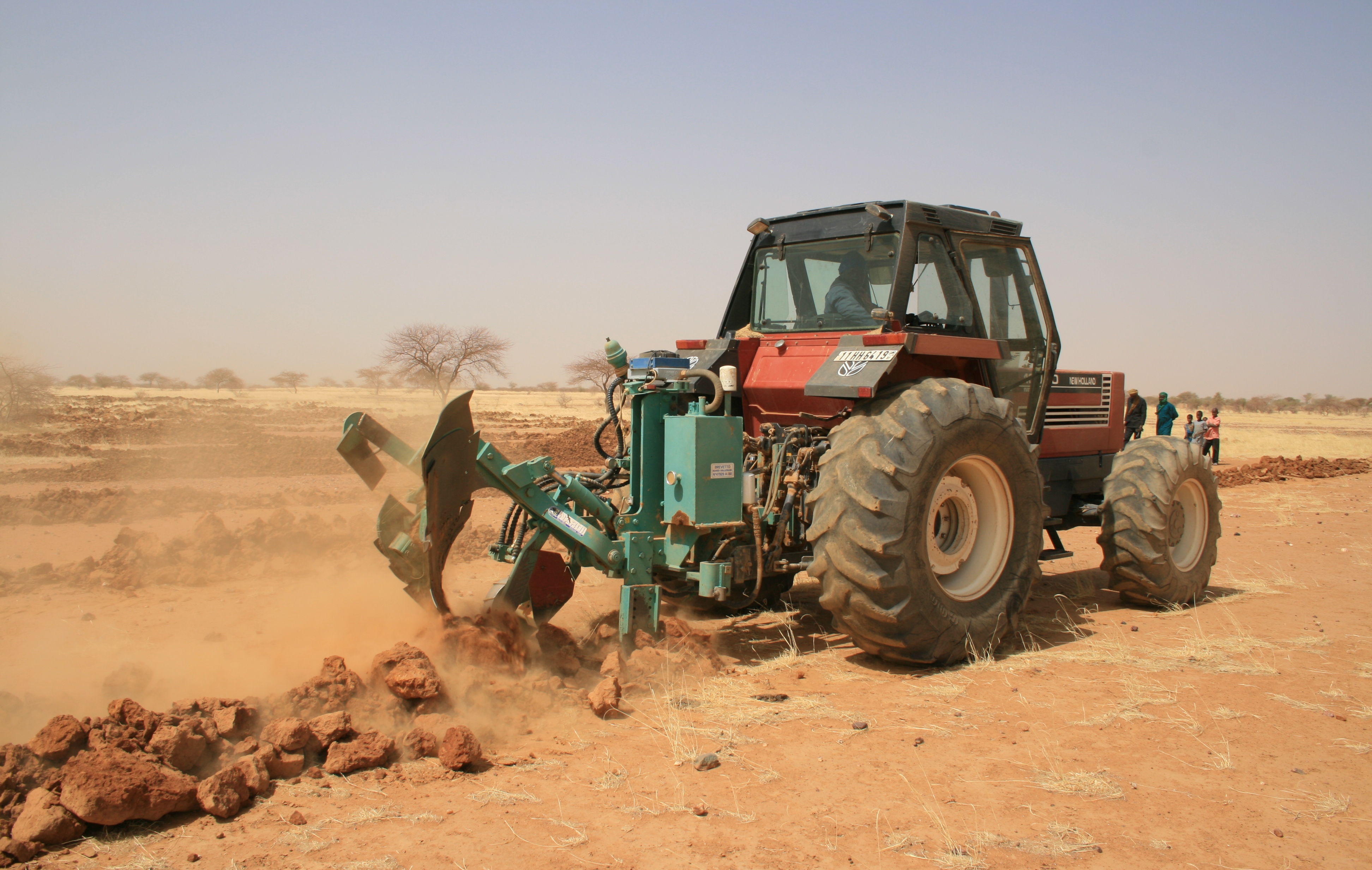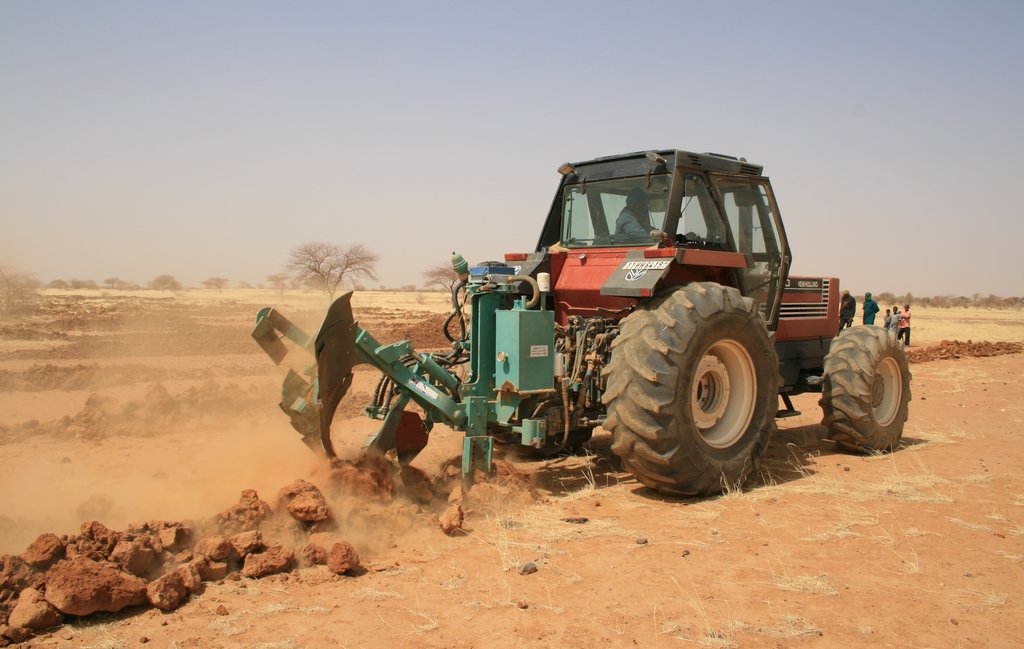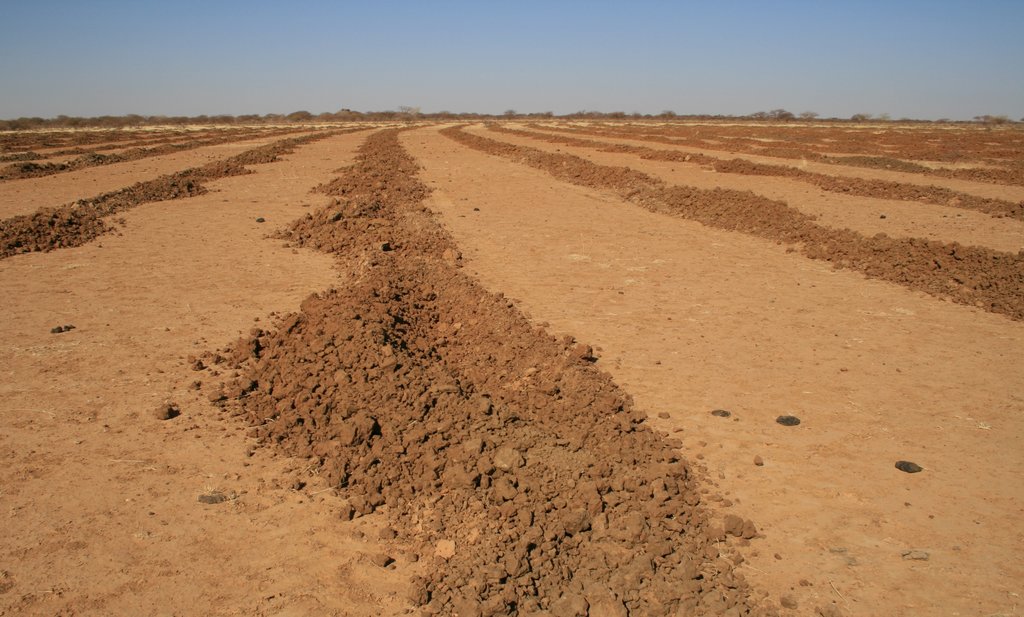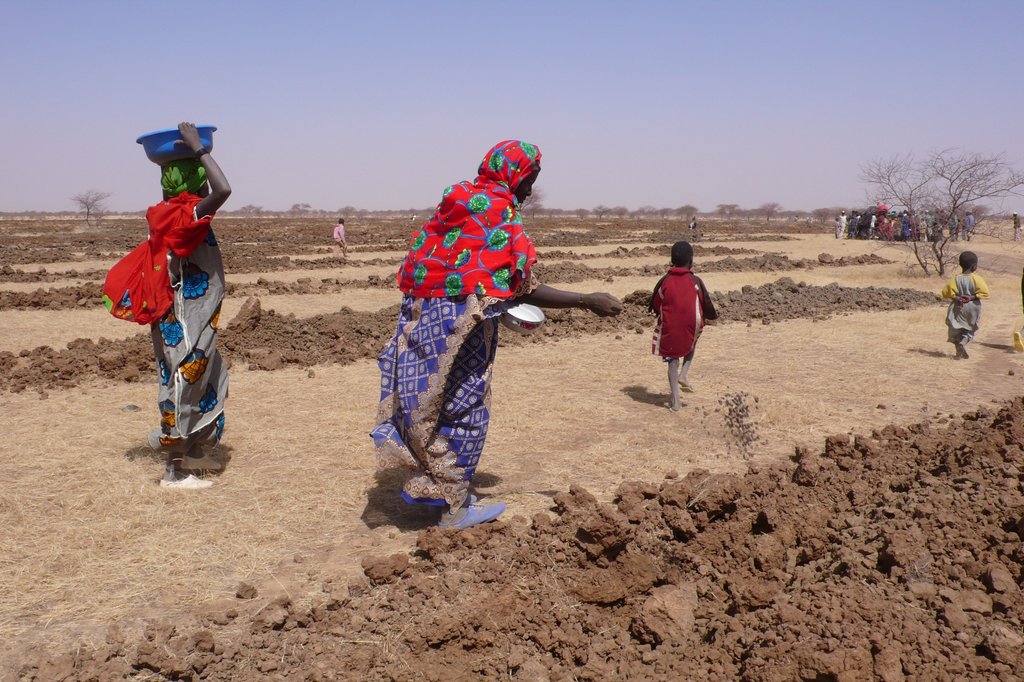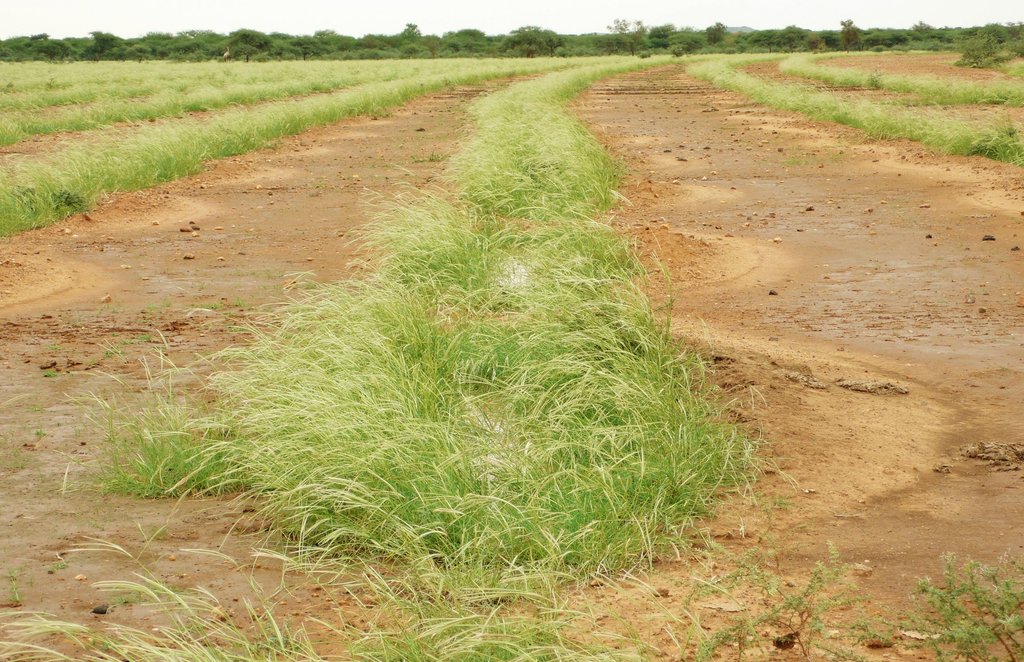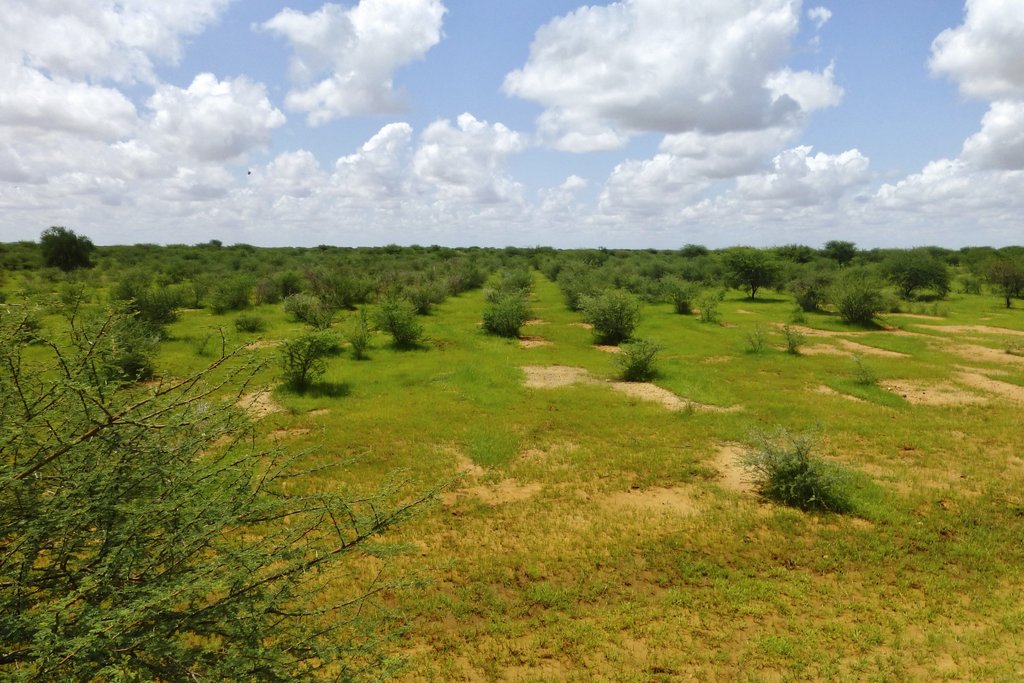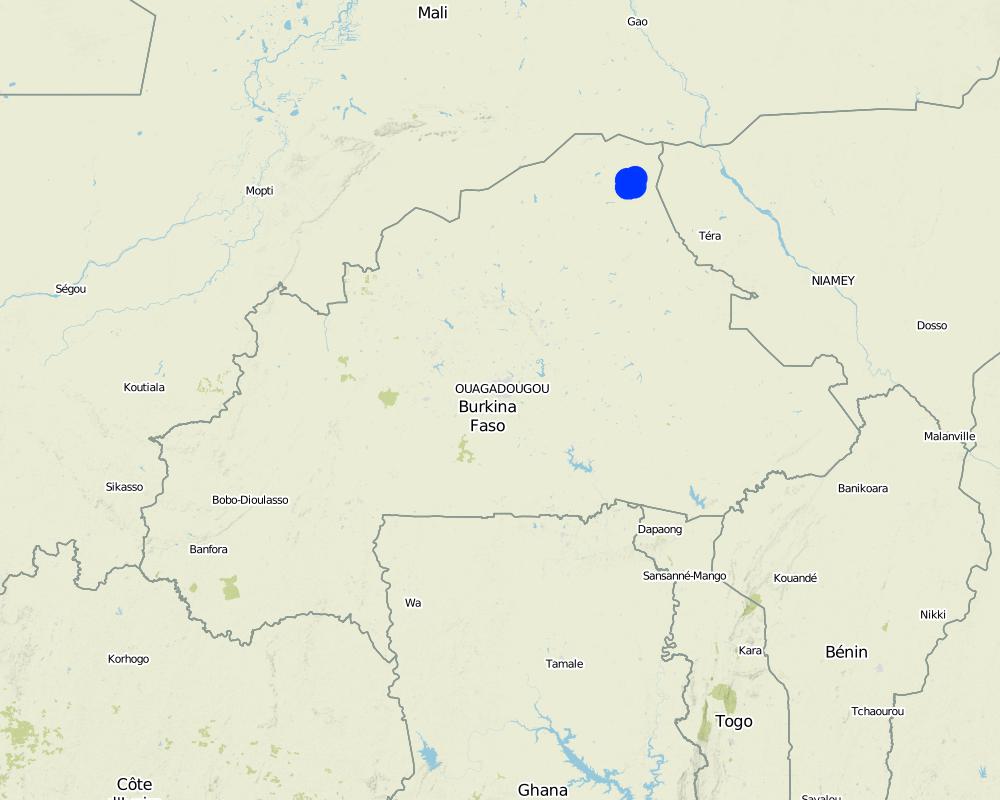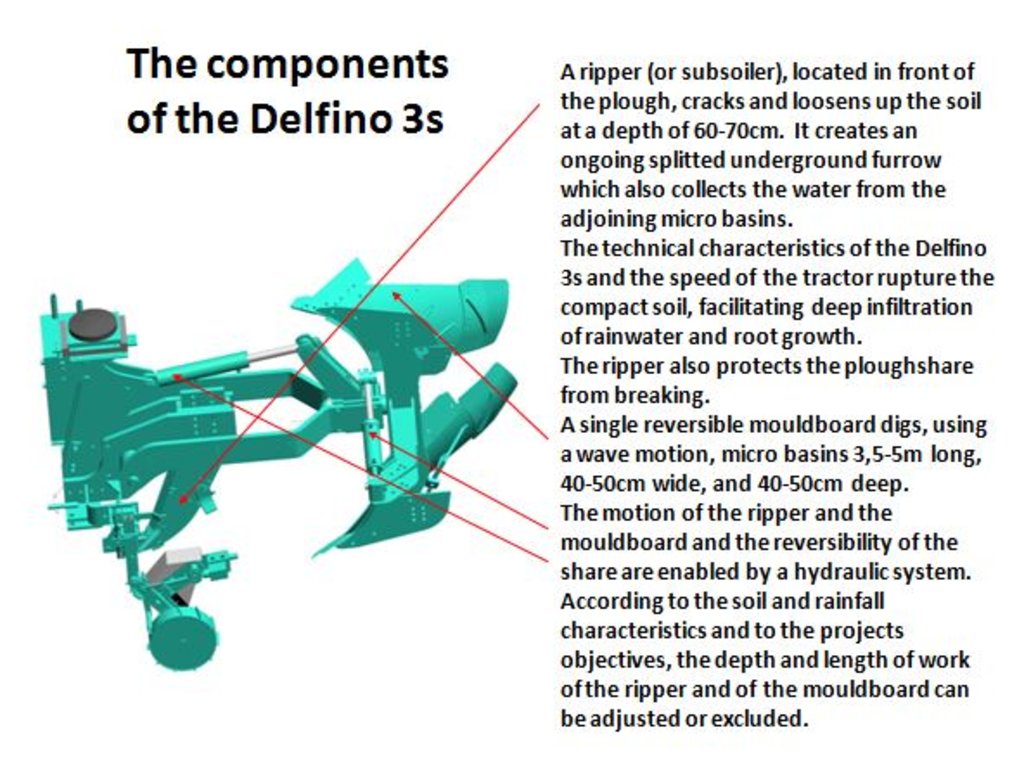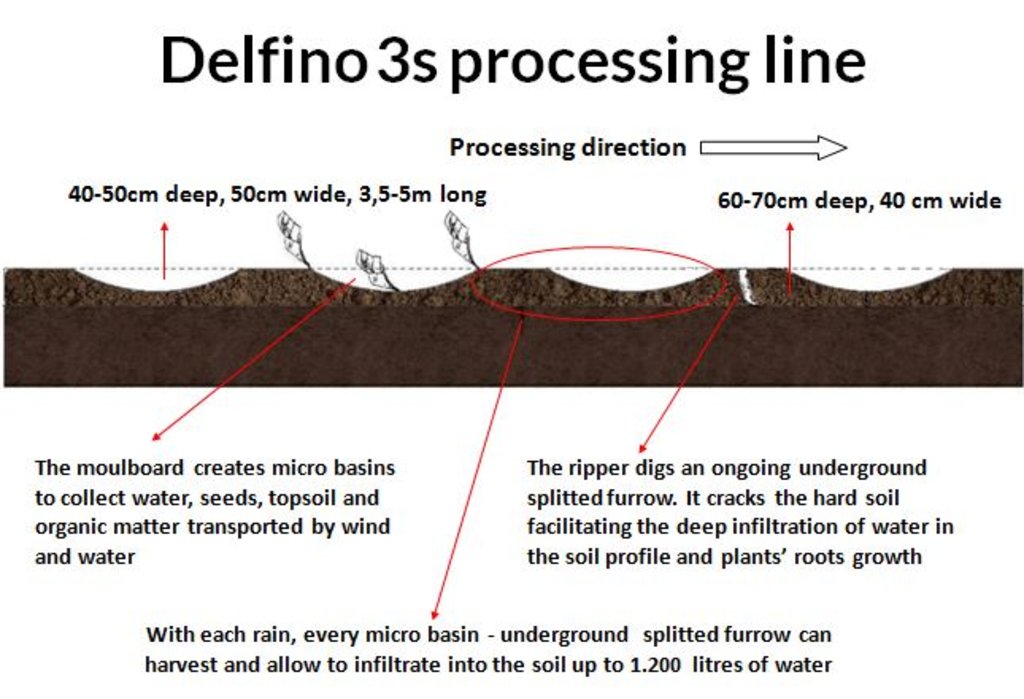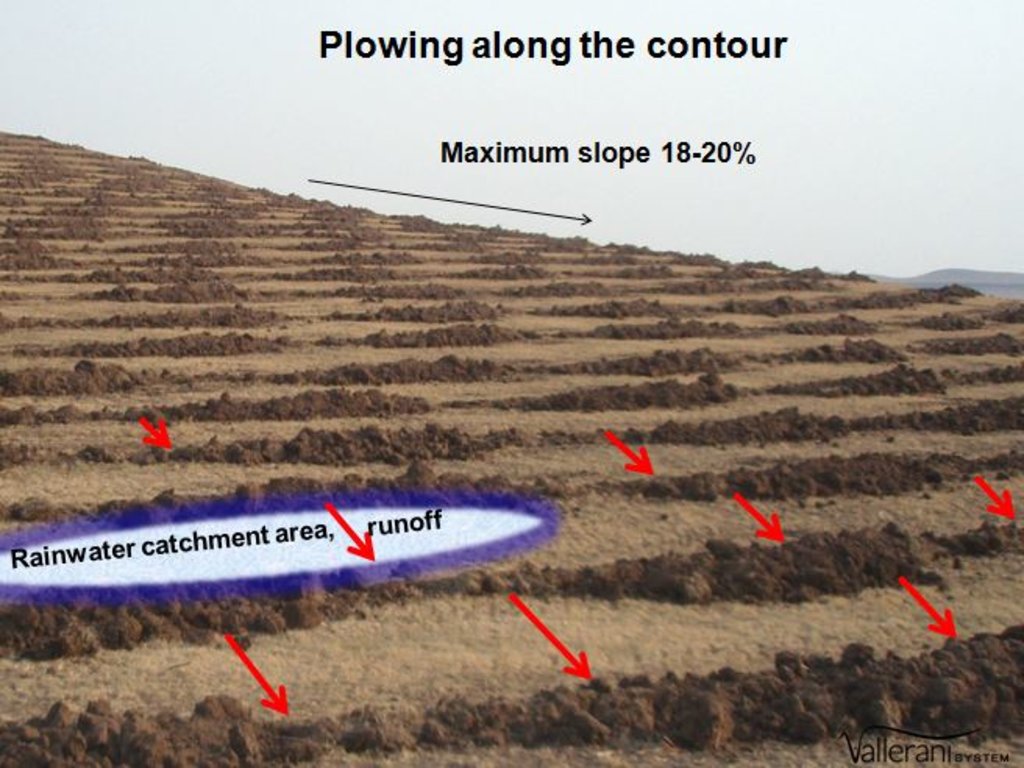Vallerani System [Burkina Faso]
- Creación:
- Actualización:
- Compilador: Sabina Galli Vallerani
- Editor: –
- Revisores: Donia Mühlematter, Rima Mekdaschi Studer, Brigitte Zimmermann
technologies_1528 - Burkina Faso
- Resumen completo en PDF
- Resumen completo en PDF para imprimir
- Resumen completo en el navegador
- Resumen completo (sin formato)
- Vallerani System: 8 de marzo de 2019 (public)
- Vallerani System: 16 de julio de 2018 (inactive)
- Vallerani System: 16 de julio de 2018 (inactive)
- Vallerani System: 12 de julio de 2018 (inactive)
- Vallerani System: 15 de agosto de 2018 (inactive)
- Vallerani system: 4 de abril de 2018 (inactive)
- Vallerani system: 4 de enero de 2017 (inactive)
Visualizar secciones
Expandir todo Colapsar todos1. Información general
1.2 Detalles de contacto de las personas de referencia e instituciones involucradas en la evaluación y la documentación de la Tecnología
usuario de la tierra:
Long Allain
Reach Afrique, NGO
Burkina Faso
Especialista MST:
Lindo Grandi
Deserto Verde Burkinabé, NGO
Suiza
usuario de la tierra:
Boureima Amadou
Reach Afrique
Burkina Faso
Nombre del proyecto que financió la documentación/ evaluación de la Tecnología (si fuera relevante)
Book project: Water Harvesting – Guidelines to Good Practice (Water Harvesting)Nombre de la(s) institución(es) que facilitaron la documentación/ evaluación de la Tecnología (si fuera relevante)
Reach Africa (Reach Africa)Nombre de la(s) institución(es) que facilitaron la documentación/ evaluación de la Tecnología (si fuera relevante)
Reach Italia (Reach Italia) - Italia1.3 Condiciones referidas al uso de datos documentados mediante WOCAT
¿Cuándo se compilaron los datos (en el campo)?
2012/2018
El compilador y la/s persona(s) de referencia claves aceptan las condiciones acerca del uso de los datos documentados mediante WOCAT:
Sí
1.4 Declaración de la sostenibilidad de la Tecnología descrita
¿La Tecnología aquí descrita resulta problemática en relación a la degradación de la tierra, de tal forma que no puede considerársela una tecnología sostenible para el manejo de la tierra?
No
2. Descripción de la Tecnología MST
2.1 Breve descripción de la Tecnología
Definición de la Tecnología:
A special tractor-pulled plow that constructs micro-catchments. It combines the traditional techniques of rainwater harvesting with mechanization for large scale land rehabilitation.
2.2 Descripción detallada de la Tecnología
Descripción:
The Technology mechanizes the traditional technique of zai and semi circular bunds for water harvesting using a modified plow named Delfino3s pulled by a 180hp tractor. A normal plow on flat land excavates a symmetrical, continuous furrow, and earth piles up equally on both sides of the furrow. The Delfino3s plow has a single reversible plowshare that creates an angled furrow and piles up the excavated soil in half moon shaped ridges only on the downhill side. The plowing must be done along the contour to collect and slows down runoff water as it flows downhill. The plow’s blade moves in and out of the soil creating micro basins about 5 meters long, 50 cm deep, 50 cm wide and spaced 2-3 m. The ripper placed before the plow cracks up the soil to a depth of 70 cm facilitating the infiltration of water into the soil profile and the growth of deep roots. After plowing, the local population sows seeds of plants of indigenous species. They are sown along the ridges of the basins and in the furrow of the ripper. While for most species seeds are collected by the local population, for species rarely present in the region, seeds are purchased from tree nurseries. Sowing the manure of goat containing seeds has also been very successful with about 95% of all micro basin having at least one tree growing. The intervention on a big scale, the effects of water infiltration in depth, erosion reduction and vegetation growth, boost a long lasting rehabilitation process. Each day the Delfino plow can plow up to 20 ha, digging 6.000-7.000 micro basins. The speed, the capability to plow hard, abbandoned land, the effectiveness of the Delfino3s plow are its major advantages for the ecosystem rehabilitation process but require a big commitment. To make the best out of it, a great motivation and organizational work is necessary to: find great availability of land; train accuratelly the technicians; have well-rooted Subjects in the region. The technological aspect is just part of the recovery process, an important work with the Communities is required upstream and downstream. Communities are involved in the management process – in identifying the areas to be restored, clarifying the land uses of the affected areas, planning and implementing e.g. gathering and keeping seeds of local ecotypes, sowing, in the management of plantations and in the monitoring and evaluation of the results. Rules for SLM are adopted and respected by all. The Technology is applied in a degraded agro-sylvo-pastoral area of the Sahel Region, in the north east of Burkina Faso with 200-500 mm of annual rainfall. The soil is sandy-loam, strongly degraded with surface crust. The population is mainly composed of semi-nomadic herders. At the beginning of the project, the NGO Reach Italia was promoting schooling; they soon realized that during the dry season most kids left school and that to avoid it they should face food security and pasture improvement. So they started applying the Vallerani System and developped the participatory approach. The vegetation growth reduces the need for fodder search and long-range transhumance which also allows children to go to school regularly.The ecosystem rehabilitation effect of the technology help the communities to become more concious and resilient to the effects of climate change and prepared to cope with the socio-economic-environmental changes they are faced with.
2.3 Fotografías de la Tecnología
2.4 Videos de la Tecnología
Comentarios, descripción breve:
A short video that introduces the Vallerani System.The video has been shot in the project area.
Fecha:
14/05/2014
Lugar:
Oudalan, Burkina Faso
Nombre del videógrafo:
Jonathan van Laamsverde
Comentarios, descripción breve:
ICARDA Vallerani –Technology transfer from Morocco to Jordan.
The presentation of the ICARDA Minared project applying the Vallerani System for rangeland rehabilitation in the Jordan Badia.
Fecha:
16/06/2016
Lugar:
Badia, Jordan
Comentarios, descripción breve:
REACH – DESERTO VERDE BURKINABe' Vallerani - Recupero Terre in Burkina Faso Sicurezza Alimentare.
Reach Italia and Deserto Verde Burkinabé present the project of soil rehabilitation and food security in Burkina Faso. Italian text.
Fecha:
01/09/2009
Lugar:
Oudalan, Burkina Faso
2.5 País/ región/ lugares donde la Tecnología fue aplicada y que se hallan comprendidos por esta evaluación
País:
Burkina Faso
Región/ Estado/ Provincia:
Sahel Region
Comentarios:
Since the project is going on since 2002, it is possible to see implemented sites in different stadium of rehabilitation. The plowing lines are clearly visible.
Map
×2.6 Fecha de la implementación
Si no se conoce el año preciso, indique la fecha aproximada:
- 10-50 años atrás
2.7 Introducción de la Tecnología
Especifique cómo se introdujo la Tecnología:
- durante experimentos/ investigación
- mediante proyectos/ intervenciones externas
Comentarios (tipo de proyecto, etc.):
The Technology was introduced in the Region in an agro-sylvo-pastoral pilot project to fight against desertification by FAO in 1996-97.
3. Clasificación de la Tecnología MST
3.1 Propósito(s) principal(es) de la Tecnología MST
- mejorar la producción
- reducir, prevenir, restaurar la degradación de la tierra
- preservar/ mejorar biodiversidad
- reducir el riesgo de desastres naturales
- adaptarse al cambio climático/ extremos climáticos y sus impactos
- mitigar cambio climático y sus impactos
- crear impacto económico benéfico
- crear impacto social benéfico
3.2 Tipo(s) actuales de uso de la tierra donde se aplica la Tecnología

Tierra de pastoreo
Tierras de pastoreo extensivo:
- Semi-nomadismo/ pastoralismo
Pastoreo intensivo/ producción de forraje:
- Pastoreo mejorado
Especies y productos animales principales:
Goats, cattle.

Tierra no productiva
Especifique:
Hard abbandoned land
Comentarios:
Especially at the beginning of the project, some communities agreed to try the system on their most unproductive land. After seeing the results, they started to request the intervention on less degraded soil and on fields that are closer to their villages.
Comentarios:
Major land use problems (compiler’s opinion): Land degradation-desertification with reduction of vegetation cover in terms of plant density and species diversity is the main problem: disappearance of grasses and trees, reduction of the size of the plants that are resistant and of the biological activity of the soil. Runoff, water and wind erosion increase. Drought and irregular precipitation have heavy consequences on soil fertility, availability of water for humans and livestock, and recharging groundwater.
3.3 Información adicional sobre el uso de tierras
Provisión de agua para la tierra donde se aplica la Tecnología:
- de secano
Número de temporadas de cultivo por año:
- 1
3.4 Grupo MST al que pertenece la Tecnología
- agroforestería
- pastoralismo y manejo de tierras de pastoreo
- cosecha de agua
3.5 Difusión de la Tecnología
Especifique la difusión de la Tecnología:
- distribuida parejamente sobre un área
Si la tecnología se halla difundida homogéneamente en un área, indique el área aproximada que cubre:
- 100-1,000 km2
Comentarios:
Total area covered by the SLM Technology in the Region is about 25.600 hectares up to 2017.
3.6 Medidas MST que componen la Tecnología

medidas agronómicas
- A1: vegetación/ cubierta del suelo
- A3: Tratamiento de superficie del suelo
- A4: Tratamiento de subsuperficie

medidas vegetativas
- V1: Cubierta de árboles y arbustos
- V2: Pastos y plantas herbáceas perennes

medidas estructurales
- S2: Taludes, bancos
- S4: Acequias niveladas, fosas

medidas de manejo
- M1: Cambio de tipo de uso de la tierra
- M2: Cambio de gestión/ nivel de intensidad
- M3: disposición de acuerdo al entorno natural y humano
3.7 Principales tipos de degradación de la tierra encarados con la Tecnología

erosión de suelos por agua
- Wt: pérdida de capa arable/ erosión de la superficie
- Wg: erosión en cárcavas
- Wo: efectos de degradación fuera del sitio

erosión de suelos por viento
- Et: pérdida de capa arable
- Eo; efectos de degradación fuera del sitio:

deterioro químico del suelo
- Cn: reducción de la fertilidad y contenido reducido de la materia orgánica del suelo (no ocasionados por la erosión)

deterioro físico del suelo
- Pc: compactación
- Pk: desmoronamiento y encostramiento
- Pu: pérdida de la función bioproductiva a causa de otras actividades

degradación biológica
- Bc: reducción de la cobertura vegetal del suelo
- Bh: pérdida de hábitats
- Bq: reducción de la cantidad/ biomasa
- Bs: reducción en la calidad y composición/ diversidad de las especies
- Bl: pérdida de la vida del suelo

degradación del agua
- Ha: aridificación
- Hg: cambio en nivel de aguas subterráneas/ nivel de acuífero
Comentarios:
Main causes of degradation: over-exploitation of vegetation for domestic use , such as wood cut for cooking, to feed livestock or as building material, overgrazing, low contribution of animal dejections that are used as cooking fuel, change of seasonal rainfall, droughts. Secondary causes of degradation: deforestation / removal of natural vegetation (incl. forest fires), low environmental awareness and support services such as forestal or veterinary assistance.
3.8 Prevención, reducción o restauración de la degradación de la tierra
Especifique la meta de la Tecnología con relación a la degradación de la tierra:
- reducir la degradación de la tierra
- restaurar/ rehabilitar tierra severamente degradada
4. Especificaciones técnicas, actividades de implementación, insumos y costos
4.1 Dibujo técnico de la Tecnología
4.2 Especificaciones técnicas/ explicaciones del dibujo técnico
Drawing 1) A. The land chosen together with the local population is plowed with the special Delfino3s plow. The spacing between the plowed lines depend on: slope, soil and rain characteristics, purpose of the project. In average the inter-line is 4-6m wide. B. Local people sow seeds (collected from local trees or bought if species are rare) or goat dung containing seeds (collected in the night enclosures after feeding the goats shaking trees with ripe seeds). C. The micro basins collect the rain that falls into the crescents and up to 90% of the runoff water. The water easily penetrates into the soil profile, remains available to plant roots without risk of evaporation and eventually infiltrates to the groundwater. Drawing 2) All plowing measures are adjustable. Total length of work: 4/8 m. Tractor required: 180hp. Working speed: 4/7 Km/h which correspond to 1,5/2.5ha per hour. Weight of the plough: 1800 Kg. Drawing 3) To optimize run off harvesting and reduce water erosion, the ploughing must always be done along the contour. The bare soil between the tilled lines works as catchment area for the collection of runoff. To facilitate the execution of the plowing along the contour, nowadays there are new technologies such as laser guidance systems or GPS assistence.
4.3 Información general sobre el cálculo de insumos y costos
Especifique cómo se calcularon los costos e insumos:
- por área de Tecnología
Indique tamaño y unidad de área:
100 hectares
Especifique la moneda usada para calcular costos:
- dólares americanos
Indique el costo promedio del salario de trabajo contratado por día:
2.5
4.4 Actividades de establecimiento
| Actividad | Tipo de medida | Momento | |
|---|---|---|---|
| 1. | Project planning, consulting and training | Otras medidas | Before starting |
| 2. | Plowing with the Delfino plow | Estructurales | Dry season |
| 3. | Seed harvesting and storage | Agronómicas | When seeds are ripe |
| 4. | Missing seeds purchase in local markets or nurseries | Agronómicas | When seeds are ripe |
| 5. | Direct sowing | Agronómicas | Dry season |
4.5 Costos e insumos necesarios para el establecimiento
Si el usuario de la tierra no cubrió el 100% de los costos, indique quién financió el resto del costo:
The NGO REACH AFRICA which implements the project is also supported by REACH ITALIA which mainly works for foundraising. They have many different founders. After the first years, thanks to the collaboration and founding by the Swiss Association Deserto Verde Burkinabé and the good results achieved, founders are more likelly to be found. The main are: different NGO's, some Italian Municipalities, a Swiss school, the Gouvernement of Burkina Faso, FAO, international cooperation agencies of Luxembourg and Belgium, a mining company and others.
Comentarios:
The actual (2018) total cost of each implemented hectare is $ 170. This cost can be considerably reduced by around 22% in the case of an optimal use of the Technical Mechanization Unit, ie 800-1000 hours of work per year. This means that an operator who works with the plow Delfino has a gross investment cost which can vary according to its technical and organizational experience and by the amount of the plowed surface each year.
4.6 Actividades de establecimiento/ recurrentes
| Actividad | Tipo de medida | Momento/ frequencia | |
|---|---|---|---|
| 1. | Pasture management to avoid overgrazing | Vegetativas | After the rain and in the dry season |
| 2. | Vegetation growth management | Vegetativas | During the first 3-5 years |
| 3. | Woodcut management | Vegetativas | After 4-7 years |
| 4. | Equipment maintenance (plow, tactor) | Manejo | Daily, weekly, seasonal |
4.7 Costos e insumos necesarios para actividades de mantenimiento/ recurrentes (por año)
Si el usuario de la tierra no cubrió el 100% de los costos, indique quién financió el resto del costo:
The NGO REACH AFRICA which implements the project is also supported by REACH ITALIA which mainly works for foundraising. They have many different founders. After the first years, thanks to the collaboration and founding by the Swiss Association Deserto Verde Burkinabé and the good results achieved, founders are more likelly to be found. The main are: different NGO's, some Italian Municipalities, a Swiss school, the Gouvernement of Burkina Faso, FAO, international cooperation agencies of Luxembourg and Belgium, a mining company and others.
Comentarios:
Maintenance costs of plow and tractor greatly depend from the attention and technical skills of tractor drivers and mechanics and from the diligence and frequency of the maintenance activities of the implements. No other maintenance costs are forseen for the Technology.
4.8 Factores más determinantes que afectan los costos:
Describa los factores más determinantes que afectan los costos:
Upfront costs for the aquisition of the required implements are around 40,000 EUR for the plow and 75,000 EUR for the tractor. Depending on the maintenance activities, the spares and fuel costs can be reduced. Fuel, oil and spares also greatly depend from the characteristics of the soil and the purpose of the project.
5. Entorno natural y humano
5.1 Clima
Lluvia anual
- < 250 mm
- 251-500 mm
- 501-750 mm
- 751-1,000 mm
- 1,001-1,500 mm
- 1,501-2,000 mm
- 2,001-3,000 mm
- 3,001-4,000 mm
- > 4,000 mm
Especificaciones/ comentarios sobre la cantidad de lluvia:
Dry season from oktober to may, rainy season from june to september. There's a great climate variability with unexpeced dry periods or areas in the rainy season. In the last years climate change effects are experienced in the region with raise in temperature, droughts and rain variability increase. Some Community claim that since the rehabilitation of big degraded areas it rains more regularly and abbundant.
Indique el nombre de la estación metereológica de referencia considerada:
Dori, Burkina Faso
Zona agroclimática
- semi-árida
- árida
Thermal climate class: subtropics. Average temperature 30°C
5.2 Topografía
Pendientes en promedio:
- plana (0-2 %)
- ligera (3-5%)
- moderada (6-10%)
- ondulada (11-15%)
- accidentada (16-30%)
- empinada (31-60%)
- muy empinada (>60%)
Formaciones telúricas:
- meseta/ planicies
- cordilleras
- laderas montañosas
- laderas de cerro
- pies de monte
- fondo del valle
Zona altitudinal:
- 0-100 m s.n.m.
- 101-500 m s.n.m.
- 501-1,000 m s.n.m
- 1,001-1,500 m s.n.m
- 1,501-2,000 m s.n.m
- 2,001-2,500 m s.n.m
- 2,501-3,000 m s.n.m
- 3,001-4,000 m s.n.m
- > 4,000 m s.n.m
Indique si la Tecnología se aplica específicamente en:
- no relevante
5.3 Suelos
Profundidad promedio del suelo:
- muy superficial (0-20 cm)
- superficial (21-50 cm)
- moderadamente profunda (51-80 cm)
- profunda (81-120 cm)
- muy profunda (>120 cm)
Textura del suelo (capa arable):
- áspera/ ligera (arenosa)
- mediana (limosa)
Textura del suelo (> 20 cm debajo de la superficie):
- áspera/ ligera (arenosa)
- mediana (limosa)
Materia orgánica de capa arable:
- baja (<1%)
5.4 Disponibilidad y calidad de agua
Agua subterránea:
> 50 m
Disponibilidad de aguas superficiales:
mediana
Calidad de agua (sin tratar):
agua potable de mala calidad (requiere tratamiento)
¿La salinidad del agua es un problema?
No
¿Se está llevando a cabo la inundación del área? :
No
Comentarios y especificaciones adicionales sobre calidad y cantidad de agua:
Generally the watertable is lowering. Surface water is collected in boulies (ponds) for livestock and household activities. Its quality deteriorates during the dry season and its quantity decreases fast.
5.5 Biodiversidad
Diversidad de especies:
- baja
Diversidad de hábitats:
- baja
Comentarios y especificaciones adicionales sobre biodiversidad:
Up to 30-50 years ago biodiversity was rich and soil coverage higher.
5.6 Las características de los usuarios de la tierra que aplican la Tecnología
Sedentario o nómada:
- Semi-nómada
Orientación del mercado del sistema de producción:
- subsistencia (autoprovisionamiento)
Ingresos no agrarios:
- menos del 10% de todos los ingresos
Nivel relativo de riqueza:
- muy pobre
- pobre
Individuos o grupos:
- grupos/ comunal
Nivel de mecanización:
- trabajo manual
Género:
- mujeres
- hombres
Edad de los usuarios de la tierra:
- jóvenes
- personas de mediana edad
Indique otras características relevantes de los usuarios de las tierras:
During the dry season men often migrate(d) to the nearby mines or cities for off-site income. After the implementation of the Technology the need for seasonal migration reduced. Difference in gender involvement: the project involves reforestation and pasture improvement for the grazing of livestock which is a men dominated activity. Since 2010 women have sown and protected from grazing some special plants for medical and domestic use and as raw material for handcrafts. Population density: 10-50 persons/km2. Annual population growth: 3% - 4%. Off-farm income specification: The only activity people of the region are engaged in is goat and cattle breading. Crop production is practiced only for subsistence use.
5.7 Área promedio de la tierra que pertenece a o es arrendada por usuarios de tierra que aplican la Tecnología
- < 0.5 ha
- 0.5-1 ha
- 1-2 ha
- 2-5 ha
- 5-15 ha
- 15-50 ha
- 50-100 ha
- 100-500 ha
- 500-1,000 ha
- 1,000-10,000 ha
- > 10,000 ha
¿Esto se considera de pequeña, mediana o gran escala (refiriéndose al contexto local)?
- pequeña escala
- gran escala
Comentarios:
The Technology is applied on land that remains in use to the local population (it's mainly land owned by the State, the Region or the Municipality and given in use to the local Communities). the amenaged sites vary from 40 ha to 150ha in each Village. Up to december 2017 a total of more than 25.600ha have been amenaged.
5.8 Tenencia de tierra, uso de tierra y derechos de uso de agua
Tenencia de tierra:
- estado
- comunitaria/ aldea
Derechos de uso de tierra:
- acceso abierto (no organizado)
- comunitarios (organizado)
Derechos de uso de agua:
- acceso abierto (no organizado)
- comunitarios (organizado)
5.9 Acceso a servicios e infraestructura
salud:
- pobre
- moderado
- bueno
educación:
- pobre
- moderado
- bueno
asistencia técnica:
- pobre
- moderado
- bueno
empleo (ej. fuera de la granja):
- pobre
- moderado
- bueno
mercados:
- pobre
- moderado
- bueno
energía:
- pobre
- moderado
- bueno
caminos y transporte:
- pobre
- moderado
- bueno
agua potable y saneamiento:
- pobre
- moderado
- bueno
servicios financieros:
- pobre
- moderado
- bueno
6. Impactos y comentarios para concluir
6.1 Impactos in situ demostrados por la Tecnología
Impactos socioeconómicos
Producción
producción de cultivo
Cantidad luego de MST:
2-4 times
Comentarios/ especifique:
Crop production and biomass augmented 2-4 times compared with traditional cultural techniques.
producción de forraje
Cantidad antes de MST:
90kg/MS/ha
Cantidad luego de MST:
1250kg/MS/ha
Comentarios/ especifique:
Grass fodder production increased by a factor of 5–30 compared with unmanaged land. The production of herbaceous biomass varied from 420 kg to 2.090 kg (dry matter) per ha; thus, on average, 1.250 kg of herbaceous biomass (dry matter) per ha developed on sites where the Vallerani system was deployed, compared with an average of 90 kg (dry matter) per ha in control plots. Vegetation is mainly distributed inside and around the micro basins.
calidad de forraje
Cantidad antes de MST:
12 floral species
Cantidad luego de MST:
44 floral species
Comentarios/ especifique:
The application of the Technology boosts a regenaration process increasing year by year. Compared to the surrounding control rangelands, fodder quality and biodiversity increased with a high proportion of grassland species of good forage value, such as Panicum laetum and Schonefeldia gracilis, and the return of legume species such as Alysicarpus ovalifolius and Zornia glochidiata also testify the improvement of the quality of the reconstituted pastures.
producción animal
Comentarios/ especifique:
The increase of fodder quantity and quality represents a surplus of 22–106 grazing days per tropical cattle unit per hectare. This extra fodder supply reduces the need to make long-range transhumance or cut shrubs to meet livestock needs for fodder, even in years where pasture is low. Livestock is fed with more and better quality fodder so its productivity and market price increase.
producción de madera
calidad de bosques
Cantidad antes de MST:
20 trees/ha of 6 species
Cantidad luego de MST:
700 trees/ha of 14 species
Comentarios/ especifique:
Significant improvement in forest cover (700 live trees and shrubbs per ha, on average) and biodiversity: trees are capable of spontaneous growth even with open access to grazing and in years of high water stress.
producción de productos forestales no madereros
Comentarios/ especifique:
Berries, gum arabica, resins, fruits.
riesgo de fracaso de producción
Comentarios/ especifique:
The increased fodder quantity, quality and biodiversity, the deep root system of the sown plants, increase resilience of the ecosystem and reduce the risk of production failure. The increased biodiversity, soil moisture and fertility increase the resilience of plants to attacks by pests, deseases and drought. Even in the case of severe drought, there are some plants that can be used as "emergency food" by humans and animals.
diversidad de producto
Comentarios/ especifique:
The implementation of the Technology gives the opportunity to diversify the production. Next to animal breeding, agriculture has intensified and in some villages the production of handicrafts, food processing, hunting and tourism activities are developping. Berries, gum arabica, resins, fruits enrich the family diet or can be sold at markets. Wild animals, insects, reptiles and birds have returned after decades and greatelly increased.
área de producción
Cantidad luego de MST:
25.600ha
Comentarios/ especifique:
By the end of 2017 about 25.600 hectares of severelly degraded, abbandoned land has been rehabilitated.
Disponibilidad y calidad de agua
disponibilidad de agua potable
Comentarios/ especifique:
Local people attest that the rehabilitation of large areas of bare soil augmented the local rain amount and the water level in the wells.
disponibilidad de agua para ganado
Comentarios/ especifique:
The rain collected in the micro basins is available for livestock during the rainy season. The augmented rainfall also increases water availability in boulies (ponds).
demanda de agua para irrigar
Comentarios/ especifique:
No water is needed for the Technology except for rain.
Ingreso y costos
gastos en insumos agrícolas
Comentarios/ especifique:
The implementation cost of the technology is not entirelly sustainable by Communities. donors and founders sustain the project. Large-scale application reduces the cost per hectare and increases the impact of actions in reversing the degradation–desertification trend. The cost of each plowed hectare.
ingreso agrario
Comentarios/ especifique:
Fodder increase in quality and quantity, improve animal health and productivity as well as their market price.
diversidad de fuentes de ingreso
Comentarios/ especifique:
The Technology increases income for herders and their families also thanks to diversification. More land is also used for agriculture. Selling or transformation of other products such as berries, fruits, gums, resins; hunting; new job opportunities in disadvantaged areas such as tractor drivers, social promoters, seed collectors...The community raises awareness and a potential for small business activities occurs, mainly among women.
disparidades económicas
Comentarios/ especifique:
Disadvantaged groups such as women start new economic activities such as mat production and sale at markets, medical plants and food production. They diversify their income and improve their status in the community.
carga de trabajo
Cantidad antes de MST:
5 micro basins/day
Cantidad luego de MST:
6.000 micro basins/day
Comentarios/ especifique:
Each man can dig 5 micro basins per day doing a heavy work. The plow can dig 6.000-7.000 micro basins per day. As most rangelands, the area of the project has a low human density (29 inhabitants/km2) so people are responsible for seed collection and storage, sowing, the livestock management during the first growing phase, monitoring activities, a.s.o.
Otros impactos socioeconómicos
Migration
Comentarios/ especifique:
Increased and improved fodder availability reduces the need for long-range tranhumance and seasonal or definitive migration to areas with more work opportunities (e.g. mines), cities or other countries.
Impactos socioculturales
seguridad alimentaria/ autosuficiencia
Comentarios/ especifique:
Food security improves with increased and diversified productivity and income. The increased fodder and crop quantity, quality and biodiversity, the deep root system and soil fertility, increase the resilience of the whole ecosystem. Even in the case of severe drought, there are some plants that can be used as "emergency food" by humans and animals.
situación de salud
Comentarios/ especifique:
Improved health especially due to better nutrition also for disadvantaged groups such as children and old people: bigger amounts, diversification, milk, vegetables. The reduction of dust storms also improves the health situation.
derechos de uso de la tierra/ agua
Comentarios/ especifique:
Awareness rising and discussion of the theme are essential. Due to the great productivity of former degraded and often abandoned land, land use rules and water rights are clearly discussed and defined at the beginning of the project. Rules for SLM are adopted and respected by all; for example, it is forbidden to install camps in or near restored areas, to cut trees, and to mow for commercial purposes.
oportunidades recreativas
Comentarios/ especifique:
Shadow, green areas near the villages increase recreational opportunities.
instituciones comunitarias
Comentarios/ especifique:
It is essential to involve and give responsibility to local people in every step of the process. Comities and groups such as the women or seniors groups gain relevance and become essential for the sustainability of the project.
instituciones nacionales
Comentarios/ especifique:
Collaborations with national institutions such as forestry direction, ministery of environnement and agricolture, research institutes, etc
MST/ conocimiento de la degradación de la tierra
Comentarios/ especifique:
All communities are involved in the management process – identifying the areas and the use of the sites to be restored, planning, and implementing (e.g. gathering and keeping seeds of local ecotypes, manure and sowing). Local villages are involved in the care and defence of new plantations and in the monitoring and evaluation of the results of vegetation growth. Ultimatelly they become responsable for the sustainable management of the whole area.
mitigación de conflicto
Comentarios/ especifique:
If land use and water rights are clearly defined, the increased availability of fodder reduces conflicts with neighbours and farmers.
situación de grupos en desventaja social y económica
Community well being
Comentarios/ especifique:
People have more confidence in the future, dignity and hope. The Community cohesion and identity is strenghtened and the community becomes more resilient to conflicts and disasters.
Impactos ecológicos
Ciclo de agua/ escurrimiento de sedimento
cantidad de agua
Cantidad luego de MST:
360.000l/ha
Comentarios/ especifique:
With each rain, each micro basin can collect up to 1.200l of water. Each hectare collects an average of 360.000 liter of rain, runoff included. Collected in the micro basin, the water has enough time to infiltrate in the soil profile and eventually in the water table. Local people assert that after the implementation of the Technology, the water level in the wells has raised.
cosecha/ recolección de agua
Comentarios/ especifique:
The Technology allows to harvest 100% of the rain falling in the micro basin and on the ripped furrow as well as up to 90% of the rain falling between the tilled lines. The bare soil between the tilled lines is essential as catchment area, to recieve rainfall and process runoff downstream. The micro basins collect up to 95% of rainfall.
escurrimiento superficial
Cantidad antes de MST:
5-15%
Cantidad luego de MST:
90%
Comentarios/ especifique:
Plowing is done along the contour. This is essential to collect the runoff that flows between the tilled lines (catchment area). The distance between the lines can be between 4m and 12m depending from: slope, rain characteristics (quantity, intensity), soil type, surface roughness (runoff coheficient), the purpose of the project (type of plants desired). The technology allows to collect up to 90% of the runoff.
nivel freático/ acuífero
Comentarios/ especifique:
Local people assert that after the implementation of the technology, the water level in the wells has raised.
evaporación
Comentarios/ especifique:
The rain collected in the micro basins infiltrates in the soil profile being accessible for seeds and roots without evaporating. After the first rains, the micro basins are quickly covered with high grasses that contribute to reduce evaporation.
Suelo
humedad del suelo
Comentarios/ especifique:
Improved soil hydrodynamic properties: the relative size of capillaries by different soil levels increased and the soil water-retaining capability improved.
cubierta del suelo
pérdida de suelo
Comentarios/ especifique:
Reduced soil loss through runoff reduction and wind erosion.
compactación de suelo
Cantidad antes de MST:
423
Cantidad luego de MST:
70
Comentarios/ especifique:
At different depth soil compactness reduces from 6 (0 to 20cm) to 1.3 times (40 to 60cm)
ciclo/ recarga de nutrientes
materia orgánica debajo del suelo C
Biodiversidad: vegetación, animales
Cubierta vegetal
Comentarios/ especifique:
Vegetation cover increase 5 to 30 times. Vegetation grows mainly inside and around the micro basins.
biomasa/ sobre suelo C
Cantidad antes de MST:
70 to 110kg/MS/ha
Cantidad luego de MST:
420 to 2090 kg/MS/ha
Comentarios/ especifique:
The biomass production increases 5 to 30 times compared to the nearby unplowed soil. On implemented sites, biomass varies from 420 to 2090 kg / DM / ha, on average between 1000 and 1200 kg / ha against 70 to 110kg / DM / ha on control plots.
diversidad vegetal
Cantidad antes de MST:
14 herbaceous, 6 woody species/ha
Cantidad luego de MST:
44 herbaceous, 14 woody species/ha
Comentarios/ especifique:
Floral diversity increases from 14 to 44 species. With a high proportion of graminaceous species of good forage value and the return of more leguminous species. Concerning the diversity of woody plants the results show an average per hectare of 14 species on implemented sites and an average of 6 species on control plots.
diversidad animal
Comentarios/ especifique:
A great increase of animal biodiversity: insects, birds, reptiles and mammals (such as squirrel, jackals, gazelle...) are observed in the implemented sites.
control de pestes/ enfermedades
Comentarios/ especifique:
The increased vegetal and animal biodiversity, deep root system, soil fertility and water availability, increase the health and resilience capacity of the whole ecosystem.
Reducción de riesgos de desastres y riesgos climáticos
impactos de inundaciones
Comentarios/ especifique:
Through water harvesting the rain is retained in the precipitation area and flood risk decreases. If flood occurs in the plowed area before the vegetation is well established, the micro basins can be washed out.
impactos de sequías
Comentarios/ especifique:
Increased biodiversity, vegetation cover and soil fertility, deep root system and water storage in the soil profile, increase the resilience to drought of the whole ecosystem. During the project, in years of extreme drought, plants have reduced their growth but most of them survived, were used to feed animals and started growing again in the following rainy season.
emisión de carbono y gases de invernadero
Comentarios/ especifique:
Minimal production of carbon dioxide compared with the potential gain.
riesgo de incendio
Comentarios/ especifique:
The implementing area remains open to lifestock (regulated pasture) to reduce the high production of grass that could favor the spread of a fire, herders also monitor the territory. There is a high level of community involvement and a growing ecological awareness.
velocidad de viento
Comentarios/ especifique:
The great number of growing trees reduce the wind speed.
micro-clima
Comentarios/ especifique:
Local people attest that the Technology locally increased the amount of rain and reduced dust storms in number and intensity.
6.2 Impactos fuera del sitio demostrados por la Tecnología
disponibilidad de agua
Comentarios/ especifique:
Local people tell that the rehabilitation of large areas of bare soil augmented the local rain amount and the water level in the wells.
sedimentos transportados por el viento
Comentarios/ especifique:
Wind intensity and dust storms reduction thanks to soil coverage and wind brake effect by trees and shrubs.
6.3 Exposición y sensibilidad de la Tecnología al cambio climático gradual y a extremos relacionados al clima/ desastres (desde la percepción de los usuarios de tierras)
Cambio climático gradual
Cambio climático gradual
| Estación | tipo de cambios climáticos/ climas extremos | ¿Cómo es que la tecnología soporta esto? | |
|---|---|---|---|
| temperatura anual | incrementó | muy bien | |
| temperatura estacional | estación seca | incrementó | muy bien |
| lluvia anual | disminuyó | bien | |
| lluvia estacional | estación húmeda/ de lluvias | disminuyó | bien |
Extremos (desastres) relacionados al clima
Desastres climatológicos:
| ¿Cómo es que la tecnología soporta esto? | |
|---|---|
| tormenta de lluvia local | moderadamente |
| tormenta de arena/ de polvo local | muy bien |
| tormenta de viento | muy bien |
Desastres hidrológicos
| ¿Cómo es que la tecnología soporta esto? | |
|---|---|
| inundación repentina | no muy bien |
Desastres biológicos
| ¿Cómo es que la tecnología soporta esto? | |
|---|---|
| insectos/ infestación de gusanos | bien |
6.4 Análisis costo-beneficio
¿Cómo se comparan los beneficios con los costos de establecimiento (desde la perspectiva de los usuarios de tierra)?
Ingresos a corto plazo:
positivo
Ingresos a largo plazo:
muy positivo
¿Cómo se comparan los beneficios con los costos de mantenimiento/ recurrentes (desde la perspectiva de los usuarios de tierra)?
Ingresos a corto plazo:
positivo
Ingresos a largo plazo:
muy positivo
Comentarios:
The system includes the use of a heavy duty tractor and a special plow whose costs are high though difficult to sustain by the local population. Most financial costs are covered by founders and donors, the land user's partecipate to the project with their work so even if the benefits in the short term are fewer than in the mid and long-term, for them it is still very positive.
6.5 Adopción de la Tecnología
- 10-50%
Si tiene la información disponible, cuantifique (número de hogares y/o área cubierta):
330 villages and around 33.000 beneficiaries
De todos quienes adoptaron la Tecnología, ¿cuántos lo hicieron espontáneamente, es decir, sin recibir incentivos/ pagos materiales?
- 50-90%
Comentarios:
Except for plowing, the other activities part of the Technology are practicable by the population under an initial guidance of a promoter with specific training. These are done without any material incentives/payments. The technology is well known in the Region and there is an active participation of the local people and a strong demand for new interventions.
6.6 Adaptación
¿La tecnología fue modificada recientemente para adaptarse a las condiciones cambiantes?
Sí
otros (especifique):
technical
Especifique la adaptación de la Tecnología (diseño, material/ especies, etc.):
The design of the plow has been adapted to increase the performance of the implement and reduce the running costs of plowing. The reversibility of the plowshare reduces the need for empty rides. The different parts of the plow are adjustable to adapt it to the needs of the project and the soil characteristics.
6.7 Fuerzas/ ventajas/ oportunidades de la Tecnología
| Fuerzas/ ventajas/ oportunidades desde la perspectiva del usuario de la tierra |
|---|
| Higly degraded, abandoned land becomes fertile and rentable again. Fodder increases in quantity and improves in quality and lasts all year round. Food security also in drought years. Herds are healthier and more productive. Fodder and water availability for animals is closer to the villages. Some plants can be sown for different uses: crops, medicine or for the production of mats or other handcrafts products that can be sold. |
| Better life conditions, more income opportunities and diversification. Food is diversified and more nutritious. Less hunger and deseases. |
| Greater community cohesion and less migration, better environnemental conciousness and commitment, education and security. People gain back dignity, confidence in the future and hope. |
| Fuerzas/ ventajas/ oportunidades desde la perspectiva del compilador o de otra persona de referencia clave |
|---|
| The Technology allows the rehabilitation of rangeland and highly degraded areas in a fast and natural way on a large scale. This can boost a longlasting effect and the shift of the whole ecosystem. The Technology confers drought resilience and reduces the effects of climate change. It allows the sequestration of CO2 and can contribute to achieve the Land Degradation Neutrality Goals. |
| The partecipatory approach is essential for the sustainability of the project. The local Communities improve their life quality, awareness, cohesion and resilience. The need for migration is reduced and people has the chance to stay in their Lands. |
| The sown tree and shrub species are mainly indigenous and locally adapted species. Each specie can follow it's own growing laws and adaptation strategies. Through the tillage process the technology offers the highest degree of efficiency in the first years from processing. Its effects last for a long time so it does not need to be repeated on the same site. |
| The VS does not use any water (except rain) in countries where water is rare and precious. |
| The use of a mechanized implement allows to rehabilitate very hard, degraded and abbandoned land on large areas with reduced population. As the Delfino3s can plow strongly degraded land, the local people often ask to work their worse land which they would never be able to use. |
6.8 Debilidades/ desventajas/ riesgos de la Tecnología y formas de sobreponerse a ellos
| Debilidades/ desventajas/ riesgos desde la perspectiva del usuario de la tierra | ¿Cómo sobreponerse a ellas? |
|---|---|
| Land that was unproductive and nobody claimed becomes productive: it can lead to misunderstandigs and conflicts. | Land use and production exploitation rules must be cleared and accepted by all Subjects at the beginning of the project. |
| Good pasture attracts animals and herders from the nearby Region (also from far away and abroad). | Rules must be clear. |
| Debilidades/ desventajas/ riesgos desde la perspectiva del compilador o de otra persona de referencia clave | ¿Cómo sobreponerse a ellas? |
|---|---|
| The investmentand running costs for the machinery are high and cannot be covered by single land users or small Communities. | The projects must be financed by donors or founders. The Community can partecipate to some extent to cover the running costs. |
| The speed and effectiveness of the Delfino3s plow are its major advantages in the ecosystem rehabilitation process but can also be its major limitation. To make the best out of it, it is necessary to have a great availability of land (1.000-1.800ha) every year. | A big organizational capacity is needed. The spreading "like wildfire" that has characterized the case study was possible by the presence on the territory of an NGO already active and rooted in the territory for many years and by perseverance, respect and competence of all involved subjects. |
| Since great extentions will be processed, a big organisation is needed for all connected activities (awareness raising, seed collection and stockage, training, logistics, etc), | Must be well organized and should operate already before starting with plowing. |
| The professional level of the tractor drivers and the mechanics as well as the lack of a well-organized mechanical workshop and spares stock can lead to long interruptions of the work and high extra costs. | Professional technical trainings and monitoring are very important. The organization of a well managed mechanical workshop and spares stock are essential. This can also be a great development opportunity for the Region. |
| The increased amount of fodder can induce the shepherds to increase the number of animals. | An important work with the Communities is essential to achieve shared and sustainable management goals. |
7. Referencias y vínculos
7.1 Métodos/ fuentes de información
- visitas de campo, encuestas de campo
4
- entrevistas con usuarios de tierras
30
- entrevistas con especialistas/ expertos en MST
8
- compilación de informes y otra documentación existente
5
7.2 Vínculos a las publicaciones disponibles
Título, autor, año, ISBN:
Un "delfino" rinverdisce i deserti, Venanzio Vallerani, ISBN 978-88-95858-05-0
¿Dónde se halla disponible? ¿Costo?
info@vallerani.com
7.3 Vínculos a la información relevante disponible en línea
Título/ descripción:
Récupération des sols fortement dégradés à des fins sylvo-pastorales, CILSS 2009
URL:
http://www.vallerani.com/wp/wp-content/uploads/2013/06/Rapport-Reach-Cills-2009.pdf
Título/ descripción:
GIZ, Good practices in soil and water conservation, pag. 22 seg.
URL:
https://www.giz.de/fachexpertise/downloads/giz2012-en-soil-water-conservation.pdf
Título/ descripción:
Using Mechanized Water Harvesting System (The Vallerani System ) for Rehabilitation of Degraded ASALs in Kenya
URL:
http://www.vallerani.com/wp/wp-content/uploads/2015/06/Meshack-Muga-Paper-25-Final.pdf
Título/ descripción:
Report for the Sino-Italian cooperation project, SFA, China
URL:
http://www.vallerani.com/wp/wp-content/uploads/2013/06/Report_in_English-10.pdf
Título/ descripción:
Global guidelines for the restoration of degraded forests and landscapes in drylands FAO, pag. 104 seg.
URL:
http://www.fao.org/3/a-i5036e.pdf
Título/ descripción:
Improved rainwater harvesting for fodder shrub production and livestock grazing: the Vallerani micro-catchment system in the Badia of Jordan
URL:
http://www.fao.org/family-farming/detail/en/c/1040697/
Título/ descripción:
Conedera, M., N. Bomio-Pacciorini, et al. 2010. Reconstitution des écosystèmes dégradés sahéliens. Bois et Forêts des Tropiques 304(2). Bois et Forêts des Tropiques 304(2). Bois et Forêts des Tropiques
URL:
http://www.vallerani.com/images/Reconstitution.pdf
Vínculos y módulos
Expandir todo Colapsar todosVínculos
No hay vínculos
Módulos
No se hallaron módulos


